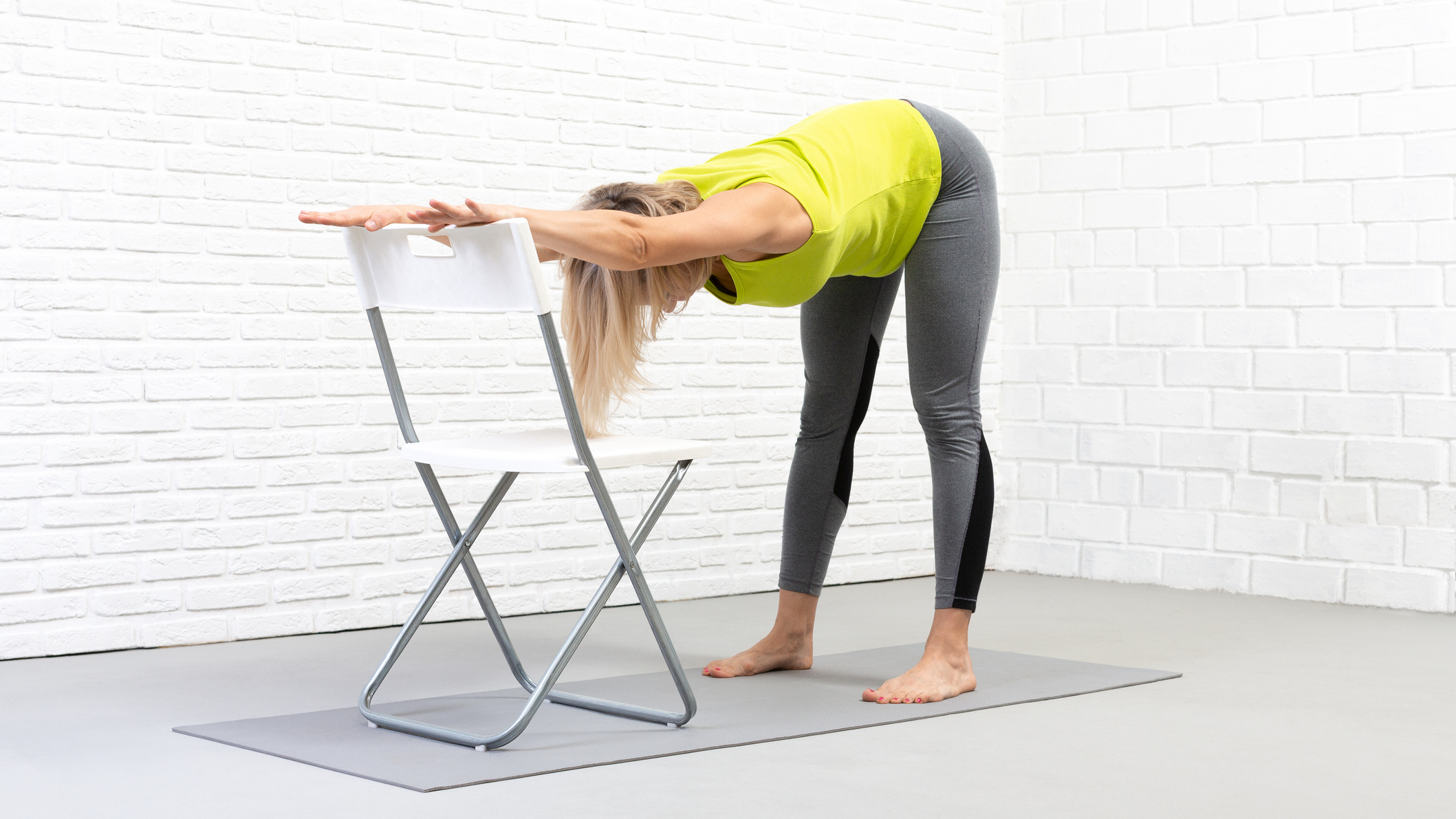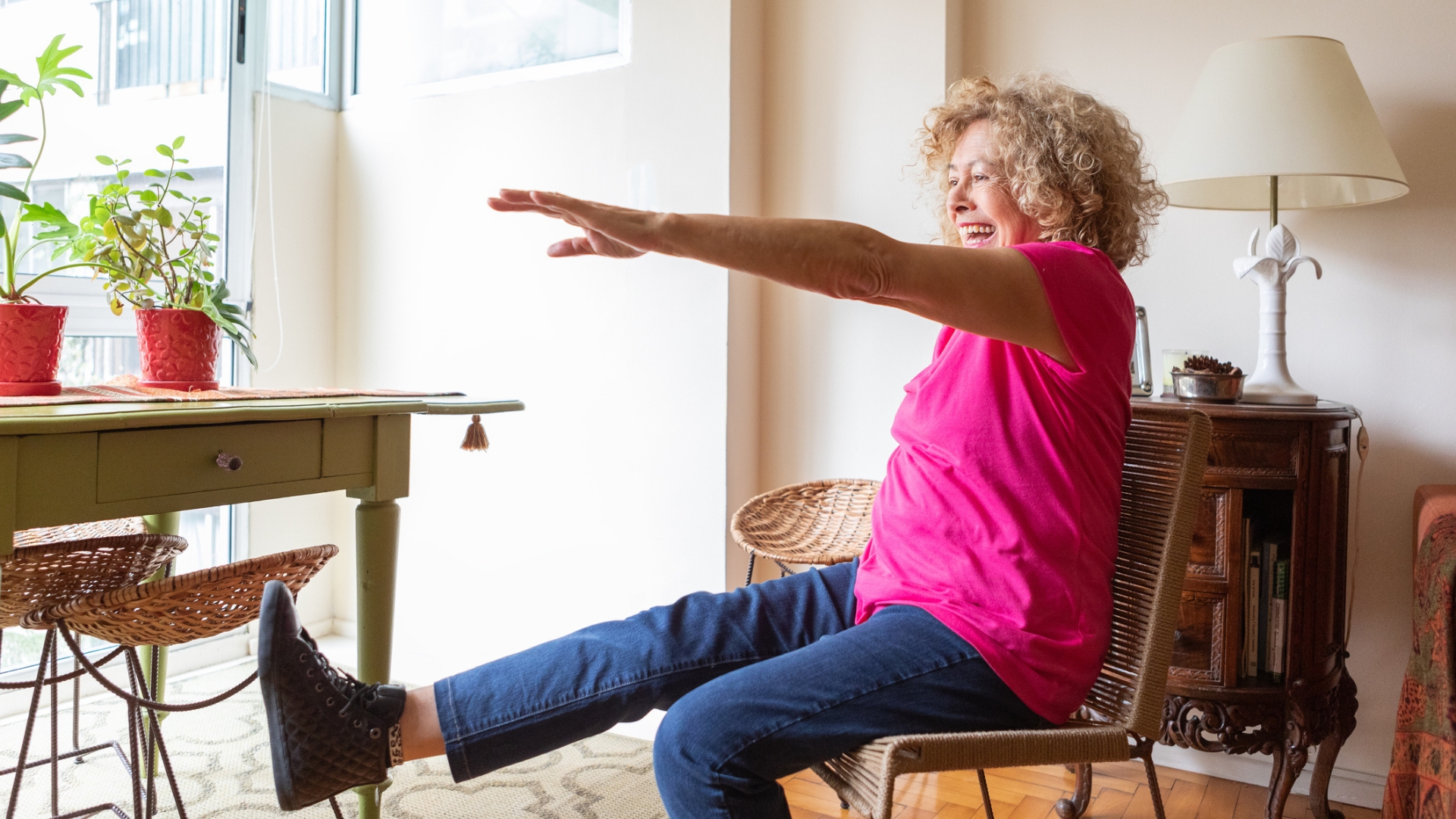The more you move, the less pain you'll feel—ease creaking joints in just five minutes with this trainer's full-body mobility drill
Movement can help to oil your joints, and this gentle routine from Jason Pak is a great way to give your body a tune-up

Are sore knees and tight hips putting you off exercise? What if I told you that—assuming an undetected injury isn't the cause of your discomfort—the more you move, the less pain you'll feel?
That is thanks to the beneficial effects exercise has on something called synovial fluid, a lubricating substance found in every joint in the human body.
Like oil in an engine, this thick egg-white-like liquid plays a crucial role in allowing your knees, ankles, shoulders, elbows, hips and wrists to function without friction or pain.
Studies have shown that exercise not only helps it fulfill its role better, enabling joints to move more freely, but analysis of synovial fluid after bouts of physical activity has also revealed fewer markers of inflammation—a common cause of joint problems.
Gentle movement activates this magical mixture and trainer Jason Pak—one half of @jasonandlaurenpak on Instagram—recently shared a full-body mobility routine that will cover all bases.
With convenience in mind, this five-minute drill can be done anywhere, and Pak has included a modified and more advanced version to suit all levels.
How to do this mobility drill
A post shared by Jason Pak & Lauren Pak (@jasonandlaurenpak)
A photo posted by on
All you need to perform the modified version of this drill is a sturdy chair.
Get the Fit&Well Newsletter
Start your week with achievable workout ideas, health tips and wellbeing advice in your inbox.
"Perform these drills for 60 seconds (30 seconds per side) and your body will definitely thank you," Pak writes in the caption.
1. Spiderman lunge off chair
Targets: hips
- Place your hands on either side of the seat with your shoulders over your hands, and step back until your body is in a straight line from head to heels.
- Step one foot to the outside of the chair.
- Gently push your hips forward.
- Return to the start and switch sides, alternating sides with each rep.
2. Pigeon off chair
Targets: hips and lower back
- Sit on a chair with your lower left leg resting on your right leg, just above your right knee.
- Gently press down on your left knee with your left hand.
- Gently lean forward to deepen the stretch.
- Lean back to sit upright and repeat.
- Switch sides after 30 seconds.
3. Supported ankle mobility
Targets: ankles and knees
- Step onto the seat of the chair with one foot.
- Hold the seat or backrest to take some of your weight.
- Gently shift your body forward, keeping your heel down, moving your knee past your toes.
- Return to the start and repeat.
- Switch sides after 30 seconds.
4. Downward dog off chair
Targets: shoulders and spine
- Facing the back of the chair, hold the top rail with both hands, then step back until you are arm's length away from the chair.
- With your feet hip-width apart, push your hips back so your back and arms approach parallel with the floor. You should feel your spine lengthen and your shoulders open.
- Return to the start with control.
5 Seated cossack squat
Targets: hips and knees
- Sit on the chair with your feet flat on the floor and wider than shoulder-width apart, and each hand on the opposite shoulder.
- Extend one leg out to the side, with your heel on the floor and toes pointing to the ceiling.
- Gently lean your body toward your bent leg to open up the hips on the opposite side.
- Lean back and repeat.
- Switch sides after 30 seconds.
More about synovial fluid
Healthy joints allow the bones inserted into them to hinge, rotate and slide against each other without friction or pain.
This is made possible by cartilage, a soft tissue called the synovium (or synovial membrane) and synovial fluid, which is produced by the synovial membrane.
One 2012 study on the synovial fluid of patients with knee osteoarthritis found four weeks of exercise therapy "decreased significantly" several markers of inflammation.
It also increased the therapeutic efficacy of anti-inflammatory drugs used to treat and relieve symptoms of arthritis when compared with the control group that was treated with drugs but not exercise.
The study authors noted that while exercise doesn't technically increase levels of synovial fluid around the joints, it improves its quality and helps it function better.
The exercises used in the study included knee joint flexion and extension followed by isometric contractions of the quads, but any activity that gets the joint moving will help synovial fluid do its job.
Some foods are also known to help with synovial fluid production, including dark leafy vegetables; oily fish such as salmon and mackerel; nuts and seeds, antioxidant rich-foods like onions, garlic and berries; and curcumin, a compound found in the spice turmeric.

Sam Rider is an experienced freelance journalist, specialising in health, fitness and wellness. He is also a REPS level 3 qualified personal trainer.
-
 I have bunions, but I can't feel them with these affordable Skechers walking shoes—now 22% off at Zappos
I have bunions, but I can't feel them with these affordable Skechers walking shoes—now 22% off at ZapposDeal A generous toe box makes the Skechers Max Cushioning Arch Fit Areena perfect for wide feet
By Lou Mudge
-
 Can't do a sit-up? A trainer says you should do these chair-based core exercises instead
Can't do a sit-up? A trainer says you should do these chair-based core exercises insteadNo sit-ups or planks
By Jennifer Rizzuto